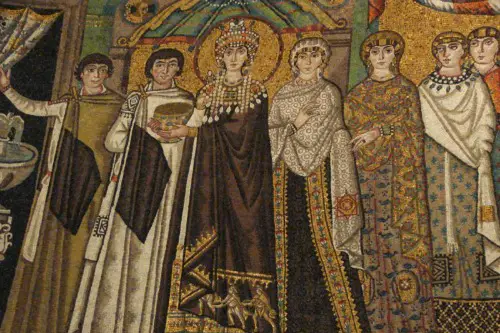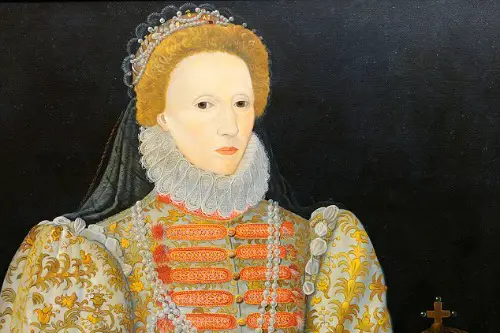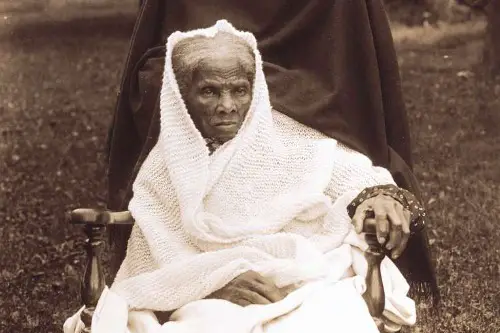Leadership isn’t confined to boardrooms or political offices. It’s about influence, innovation, and courage, and the women throughout history who have broken boundaries are prime examples of how leadership truly works. Their stories often get overshadowed, but they possess the qualities we can all learn from—resilience, vision, and the will to challenge the norms of their time. These women have set the bar for what it means to lead, and today, we’re taking a closer look at some of these legendary figures who can still inspire us in our modern-day leadership journeys.
Empress Theodora: The Power of Influence

In the 6th century, a woman named Theodora rose from humble beginnings to become one of the most influential leaders of the Byzantine Empire. Born into a family of lower-class status, she was the daughter of a bear keeper, and her early life was anything but glamorous. But Theodora’s journey to power tells us something powerful: it’s not where you come from that matters, but where you’re headed.
Theodora first made a name for herself as an actress, a profession that was often frowned upon by the elite of the time. Yet, her intellect, charm, and political acumen were undeniable. When she met Emperor Justinian I, their relationship blossomed, and she became his most trusted advisor. In a world dominated by men, Theodora’s ability to lead alongside Justinian was unprecedented. Her role was so significant that, in one of the most pivotal moments of her life, she convinced Justinian not to flee during the Nika riots—an uprising that threatened their reign. Her rallying cry was simple yet powerful: “Purple is the noblest of all colors.” This statement was not just about royalty but about courage, standing firm in the face of danger.
What Theodora teaches us is that true leadership isn’t about titles or gender; it’s about having the conviction to stand tall, even when everyone else is backing down. She wasn’t afraid to step up, and her influence is still felt today. Theodora was the embodiment of resilience, and her legacy reminds us that leadership is about making bold, sometimes risky decisions when others hesitate.
Queen Elizabeth I: The Power of Vision and Diplomacy

Jump forward to the 16th century, and you’ll find one of history’s most revered rulers—Queen Elizabeth I of England. Known as the Virgin Queen, Elizabeth faced incredible challenges during her reign, including threats of invasion, religious strife, and political unrest. Despite these immense pressures, she reigned for 44 years and became a symbol of stability and strength. How did she do it?
Elizabeth’s leadership style was defined by diplomacy, vision, and an uncanny ability to navigate the complex political landscape. When she ascended to the throne in 1558, England was a divided kingdom. The Catholic Church had been the heart of the nation’s identity, but Elizabeth was Protestant, and this caused deep divisions. She didn’t choose to fight fire with fire, but instead used her sharp mind and strategic thinking to bring about a religious settlement known as the Elizabethan Religious Settlement. This carefully crafted policy helped avoid bloodshed, allowing England to maintain relative peace during a tumultuous time.
But Elizabeth’s genius didn’t stop at religious matters. She was known for her remarkable skill in diplomacy, often playing the complex game of politics with European powers like Spain and France. One of her most famous moments came in 1588, when she successfully defended England from the Spanish Armada. Her leadership wasn’t just about military might; it was about knowing when to stand firm and when to forge alliances.
Queen Elizabeth I shows us that leadership is not just about having power; it’s about using it with wisdom and foresight. Her ability to unify a divided nation and her keen understanding of the global political landscape offer modern leaders a valuable lesson in how to balance vision with pragmatic decision-making. Elizabeth didn’t just react to events; she shaped them, and in doing so, she secured her place as one of the greatest monarchs in history.
Harriet Tubman: The Power of Courage and Commitment

The story of Harriet Tubman is one of extraordinary courage, and it’s a reminder that true leadership often requires great personal sacrifice. Born into slavery in the early 1800s, Tubman’s path to freedom was paved with both personal and societal barriers. Yet, rather than accept the conditions she was born into, Harriet led hundreds of enslaved people to freedom as a conductor on the Underground Railroad, a network of safe houses and secret routes designed to help escapees reach the northern United States or Canada.
What makes Harriet Tubman’s leadership so remarkable is the unwavering commitment she had to the cause of freedom. She didn’t just help a few people—she risked her life multiple times, going back to the South even after she had escaped to guide others. Her courage was unparalleled, and what’s more, she did all this while maintaining an incredible sense of empathy for those she helped. Tubman wasn’t just freeing slaves; she was empowering people to take control of their own destinies.
During the Civil War, Tubman continued her leadership journey by becoming a spy for the Union Army, scouting Confederate territories and providing valuable intelligence. Her resilience and resourcefulness were essential to the success of several missions, and her legacy extends far beyond her role in the Underground Railroad. Harriet Tubman’s story is one of relentless determination, and her life exemplifies how leadership is about standing firm in the face of adversity and never wavering from one’s values.
Harriet shows us that leadership is about more than just strategy—it’s about commitment to a cause that’s greater than yourself. Her actions remind us that even in the most oppressive of circumstances, one person can make a monumental difference. She led with heart and an unwavering belief in the power of freedom.
Drawing Strength from the Legends
When we look at the leadership styles of women like Theodora, Queen Elizabeth I, and Harriet Tubman, one thing becomes clear: leadership is not a one-size-fits-all concept. These women led in different ways, in different eras, and under vastly different circumstances, but they all had one thing in common—an unshakeable belief in their ability to make a difference.
Today, we can take inspiration from their stories. Whether you’re leading a team at work, raising children, or advocating for change in your community, the principles of courage, vision, and commitment that these legendary women embodied still hold true. It’s easy to think that leadership is reserved for the “top dogs,” but the reality is that leadership is about influence, integrity, and action. And sometimes, as these legends show, it’s about stepping up when the world tells you to sit down.
